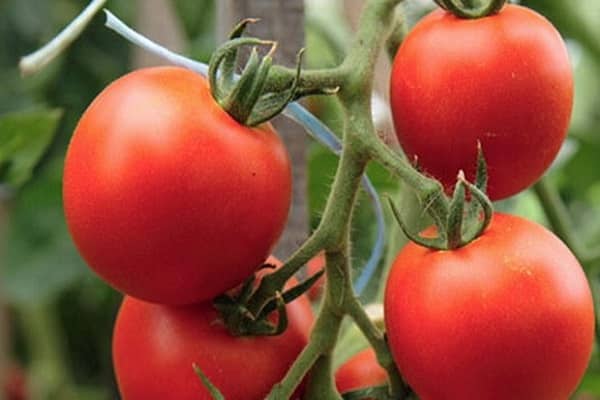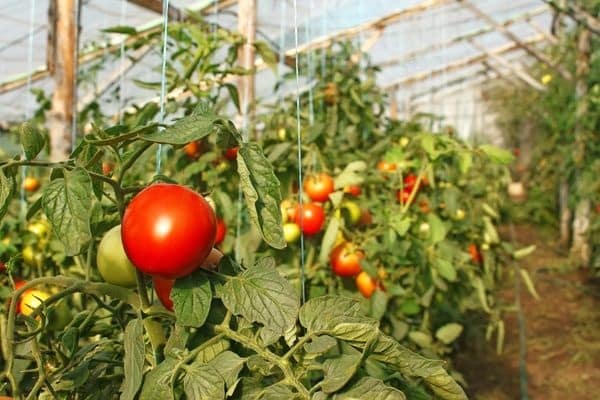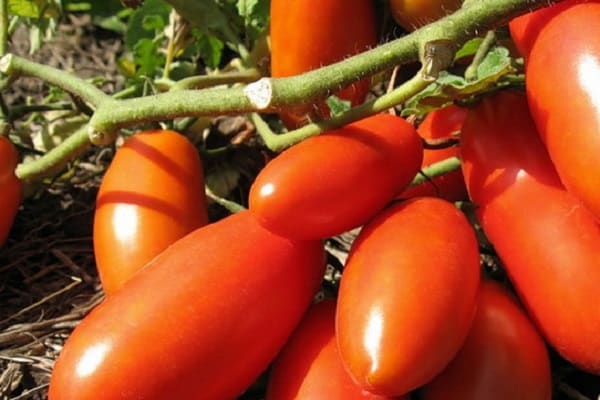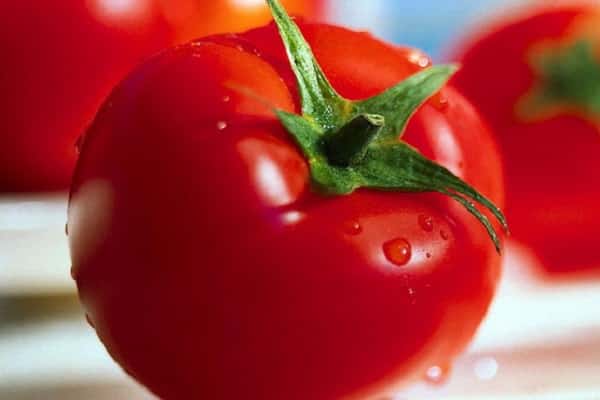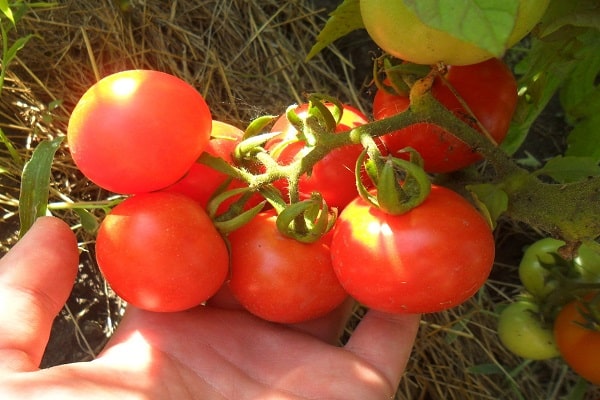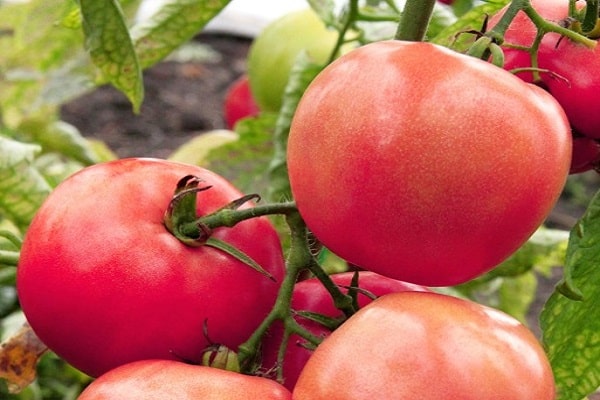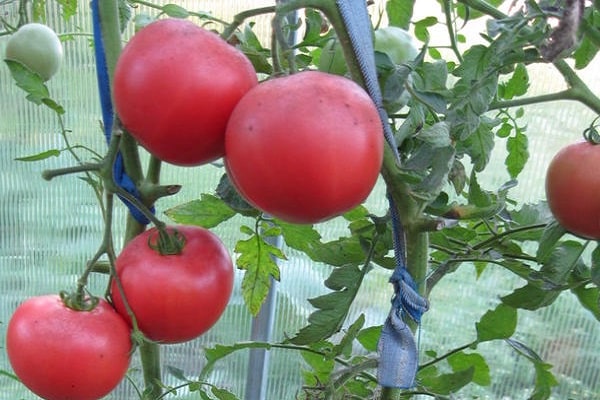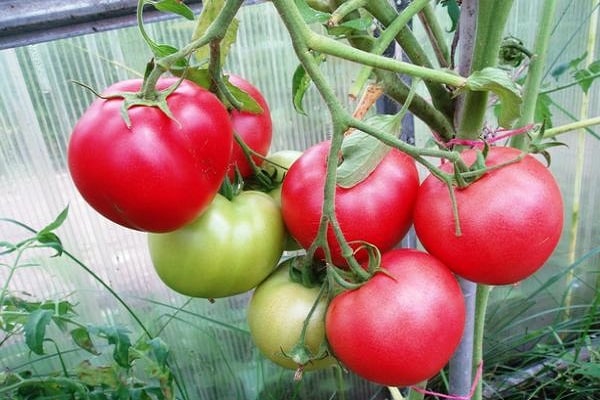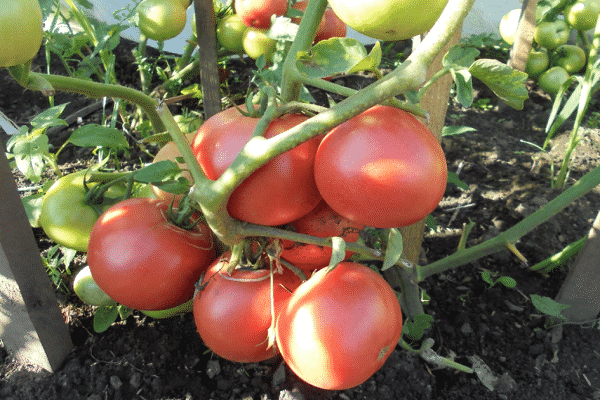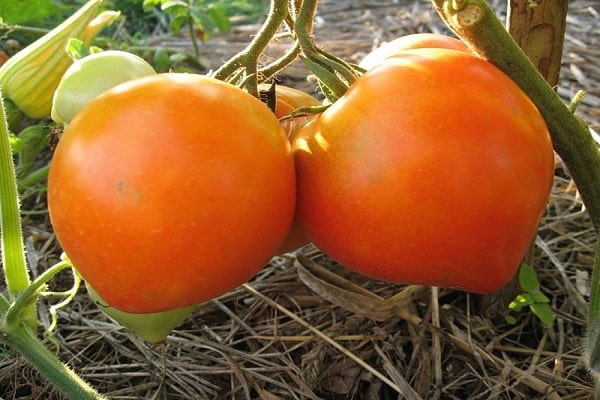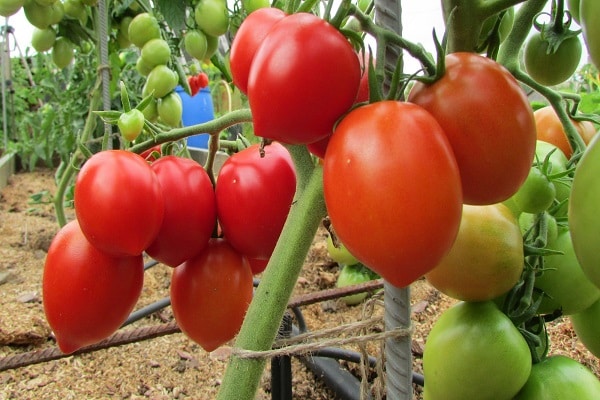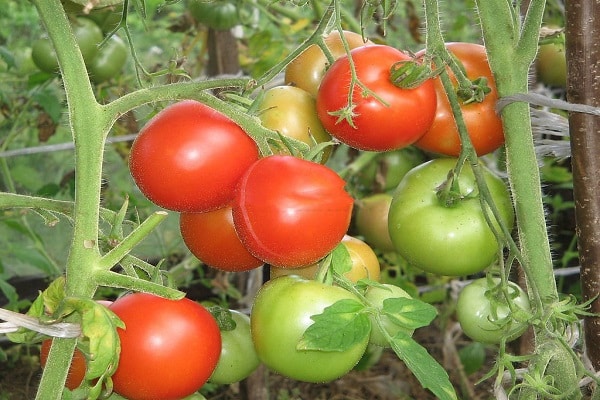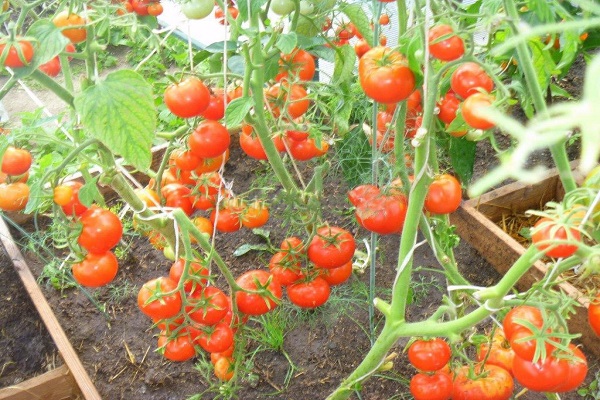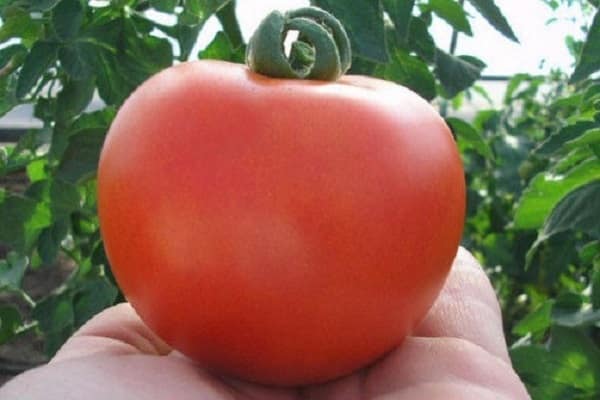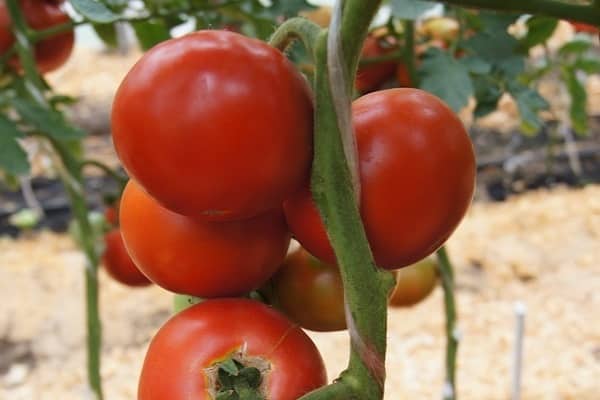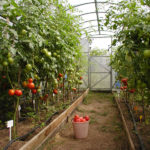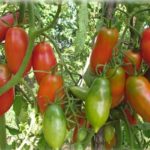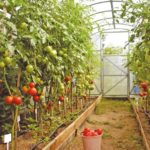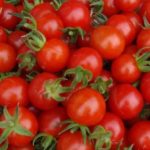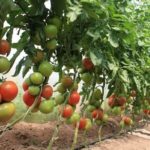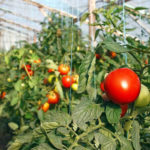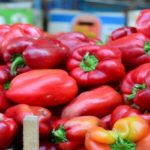It's time to choose early varieties of tomatoes for greenhouses. In our climate, you can get an early harvest only in closed ground conditions. Salads from the first tomatoes picked in your greenhouse can be prepared as early as June. And all thanks to the short growing season of early-ripening tomatoes.
Important characteristics of early tomatoes
All early ripening varieties can be divided into three main groups, based on the ripening period. Classification groups are given in the table.
| Group | Maturation period in days |
| ultra-early | from 80 to 85 |
| early ripening | from 90 to 95 |
| mid-early | from 100 to 105 |
In addition to the ripening period, it is important to consider the height of the plant. The height of the bush plays a big role in the choice; this characteristic largely depends on the type of growth of early tomatoes. There are determinate and indeterminate varieties for greenhouses.
Determinate tomato bushes stop growing on their own after the formation of 4 to 8 bunches. Plants of the opposite type do not have growth restrictions; gardeners call them indents for short. Indeterminate varieties are better suited for greenhouses. They make the most of the height of the greenhouse, adult specimens reach 2 meters in height.
Modern early ripening varieties (hybrids) for greenhouses are very productive, with high-quality care they maintain long-term fruiting and suffer little disease. Indents, without exception, require work on forming a bush and tying it to a support. In greenhouses, low-growing varieties of tomatoes should be planted in areas with very short summers. Determinants are distinguished by friendly yield, some do not require pinching and gartering.
For gardeners, varietal characteristics regarding the shape, size and color of the fruit are important. Breeders have developed tomato varieties to suit every taste. For lovers of juicy pulp, large-fruited tomatoes are suitable; for those who prepare, tomatoes with small and medium-sized fruits are suitable.
Ultra early tomatoes
Let's look at the ultra-early varieties of tomatoes that summer residents have been growing in their country greenhouses for many years. Let's take super early varieties of tomatoes: Aurora, Sanka.
Aurora F1
Aurora is a super early tomato that does not require special care. Even in a greenhouse, the bushes do not exceed a meter in height. Can be grown without support. Thickened planting is acceptable - 7 plants per square meter. m.When planting seedlings, maintain a distance of 0.5 m between the rows. By following the recommended planting scheme, good yields are achieved; 15 kg of fruit are harvested per square meter. Aurora tomatoes have good taste. The size is medium, the tomatoes can be canned. Advantages of a hybrid:
- transportability;
- resistance to TMV;
- resistance to fruit cracking.
Sanka
When choosing tomato varieties for greenhouses, you should pay attention to the Sanka tomato. This is a very early and cold-resistant tomato, ripens earlier than others. In mid-April, seedlings can be planted in a greenhouse, provided that the soil is warmed to 15 °C. The bushes are low, their growth in the greenhouse is 60-70 cm; during the ripening of the fruits they look impressive due to the beautiful red fruits of medium-sized round shape. The stated weight of the fetus is 150 g.
To get a yield of 15 kg per square meter. m, seedlings are planted tightly. For 1 sq. m place up to 7 plants. Sanka is characterized by extended fruiting. With proper care (watering, fertilizing, timely harvesting of fruits), the fruits set throughout the summer. Advantages of the variety: unpretentiousness, productivity, versatility.
Early ripening raspberry hybrids for greenhouses
Very interesting early varieties of tomatoes from the “Raspberry Miracle” series. Let's look at several hybrids in this series: Raspberry surprise, Raspberry wine. The self-explanatory names of the hybrids leave no doubt about the color of the ripe fruits.
Raspberry surprise F1
The plant is determinate, greenhouse bushes grow up to 90 cm, some specimens can exceed the declared height. The ripening period is 80-105 days. The declared yield is 15 kg per unit area (1 sq. m).The bushes develop a powerful root system, this must be taken into account when planting. Follow the 70 by 60 cm pattern when planting seedlings in a greenhouse.
Raspberry fruits in a state of biological ripeness, large, beautiful flat-round shape. Fruit weight is from 300 to 500 g. The pulp is harmonious in taste, dense, homogeneous. There are no voids. The fruits pour and ripen very quickly. Raspberry miracle tomatoes are used in salads.
A hybrid for greenhouses and hotbeds loves fertile, loose soils and can tolerate mild drought. Does not tolerate frost well, prefers warmth and good light. Sow seedlings in the first ten days of March.
Raspberry wine
Summer residents will be pleased with the appearance of the fruits: large, bright crimson, round, smooth. The harmonious taste of the juicy pulp will not leave you indifferent. Raspberry wine tomatoes are universal, large specimens are used fresh, medium and small ones are processed. Products (canned food, ketchup, juice) are of high quality.
In greenhouse conditions, the bushes grow powerful, their height can reach up to 2 meters. To obtain large fruits, the plant is pinched and grown into 2 stems. According to reviews, the hybrid does not get sick during the season and requires minimal care.
Mid-early tomatoes
This section presents the best early varieties with a ripening period of 100 to 105 days. Analysis of reviews indicates their popularity among summer residents growing tomatoes in a greenhouse.
Budenovka
Budenovka is a variety without flaws, bred in Siberia. Since 2002 (the year it was entered into the state register), Budenovka has proven itself to be excellent; it is grown in protected soil throughout the Russian Federation. By planting plants according to the scheme of 3 bushes per square meter, you get up to 20 kg of fruit.Bushes of indeterminate type, 1.7 m high, require support, forming 2-3 stems.
The fruits are red, heart-shaped. Outwardly, they are very reminiscent of the popular variety Bull's Heart. The average weight is 350 g, there is data on specimens weighing up to 850 g. The purpose of the fruit is salad, their skin is thin, smooth, not intended for canning.
The fruits are usually used in the preparation of snacks, from the fleshy pulp to obtain tomato juice, to make sauces, ketchups, and purees. Ripe tomatoes are stored well in a cool room and are not damaged during transportation. The taste of Budenovka is balanced, there is no excessive acidity, the sweetness is moderate.
You don’t have to worry about the harvest when planting early Budenovka tomatoes in the greenhouse; it doesn’t depend on weather conditions and is always stable. Bushes and fruits practically do not suffer from fungal diseases. During the summer, 3 times feeding is sufficient. Maintenance is not burdensome.
Evpator F1
The Gavrish company offers seeds of the mid-early, indeterminate hybrid Evpator. Seedlings can be planted in greenhouses at the age of 45 days. The hybrid shows good results precisely when transplanted early into greenhouses. From one bush you get from 4.5 to 5.5 kg of tomatoes.
According to the type of growth of Evpator indent, tall bushes need to be formed into one stem, the stepsons should be pinched throughout the summer, the growth point should be removed towards the end of the season. Seedlings are planted according to the recommended scheme - 40 by 60 cm.
The fruits are flat-round, perfectly smooth, shape and weight (130-150 g), ideal for canning, and can be used in slices and salads. Ripe fruits are resistant to cracking. The advantages of the hybrid include resistance to a number of diseases, such as:
- fusarium;
- cladosporiosis;
- VTM;
- blossom end rot of fruits.
President 2 F1
This Dutch hybrid doesn't really need advertising. He has already won the love of summer residents. The classic red fruits not only taste good, they are very beautiful. The size of the fruit is even, the average weight ranges from 250-300 g.
The bushes are of a semi-determinate type; they stop growing on their own; at the peak of fruiting, their height is about 1.8 m. The stems are poorly leafy and produce a moderate number of shoots. The yield of the harvest is friendly and early. The value of the variety can be considered good immunity, keeping quality of fruits, and productivity.
Already in mid-late June you can enjoy the first tomatoes grown in the greenhouse. All you need to do is select and plant the earliest tomatoes for the greenhouse. The review offered above will help you decide.

